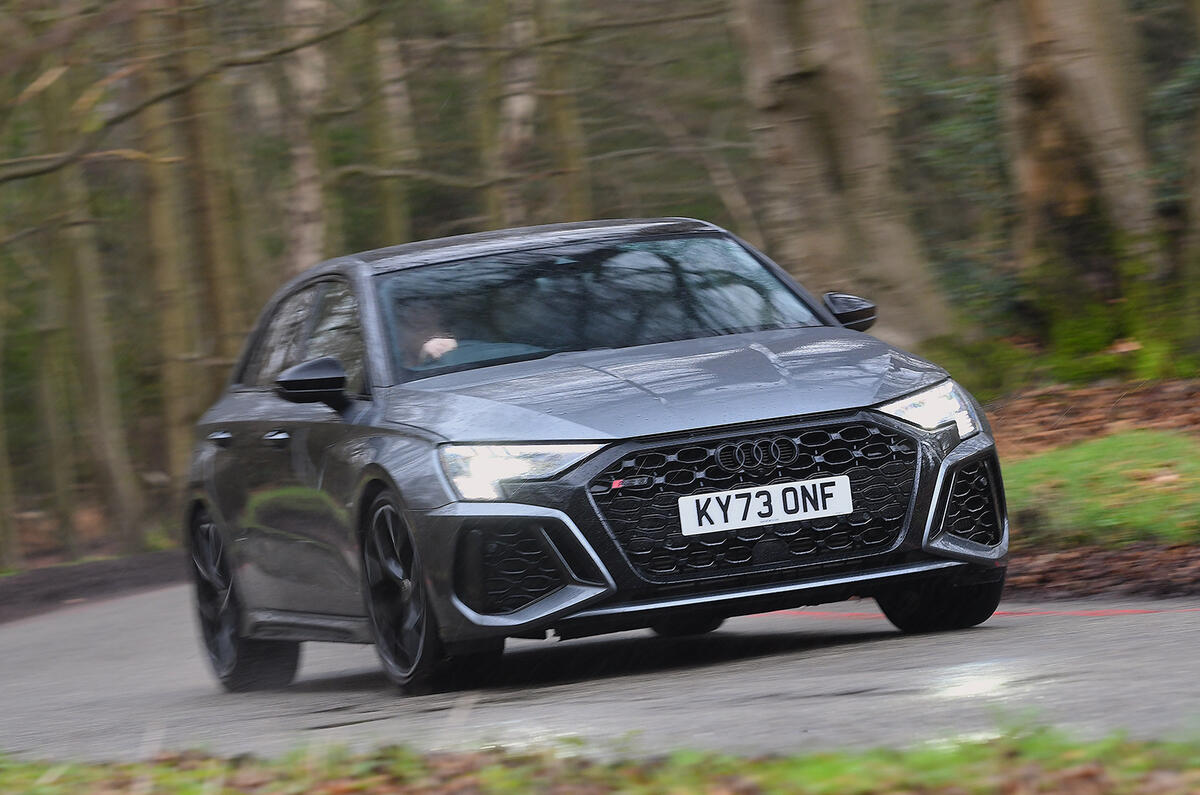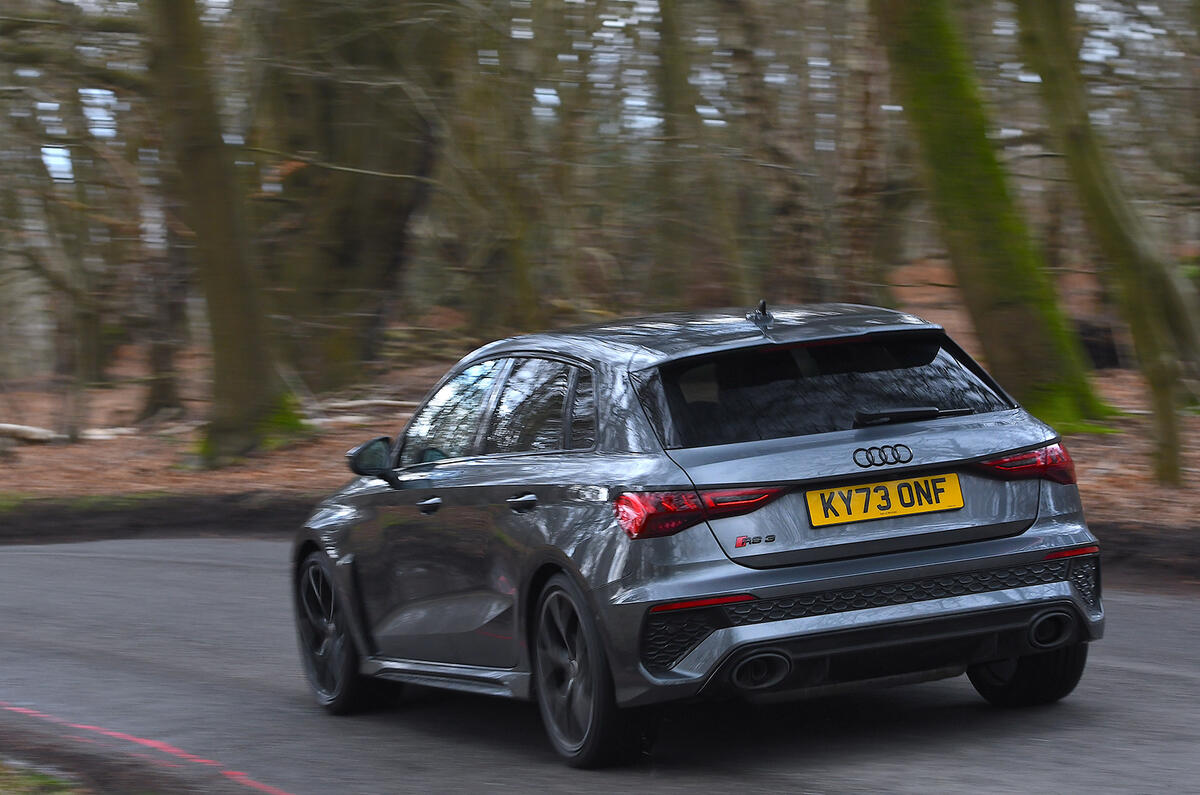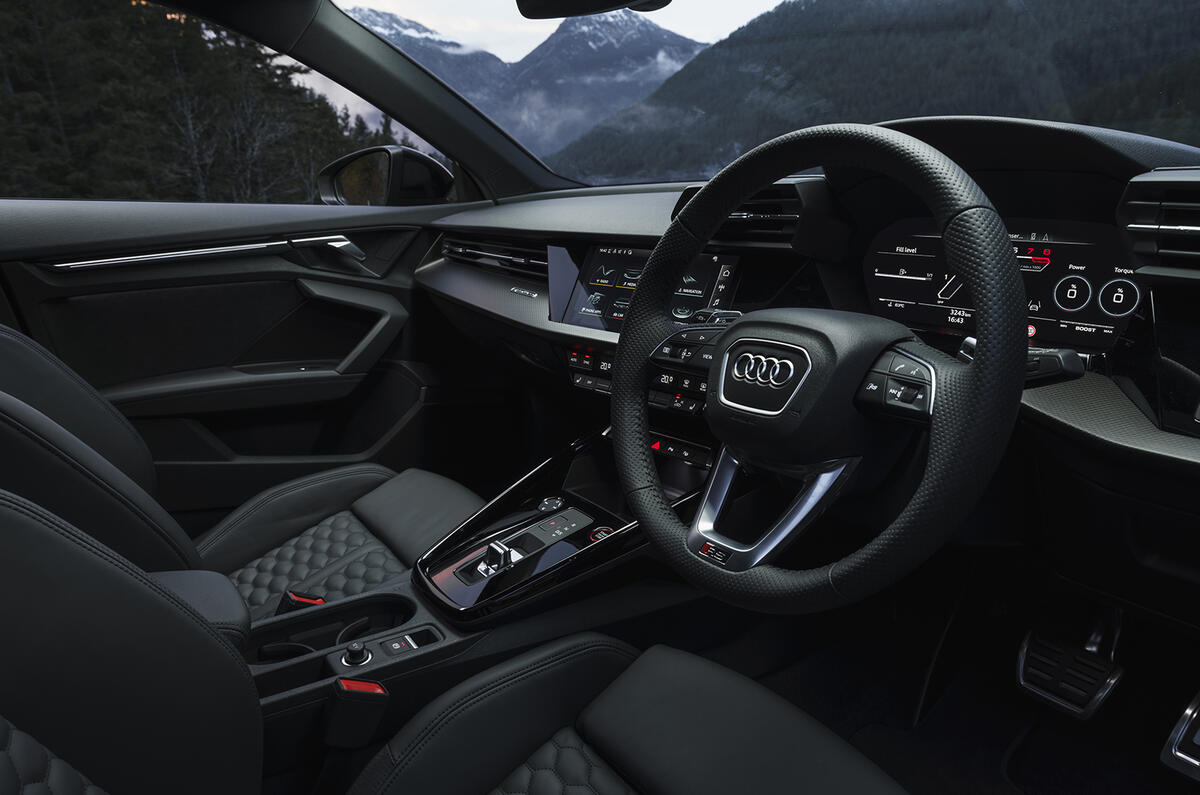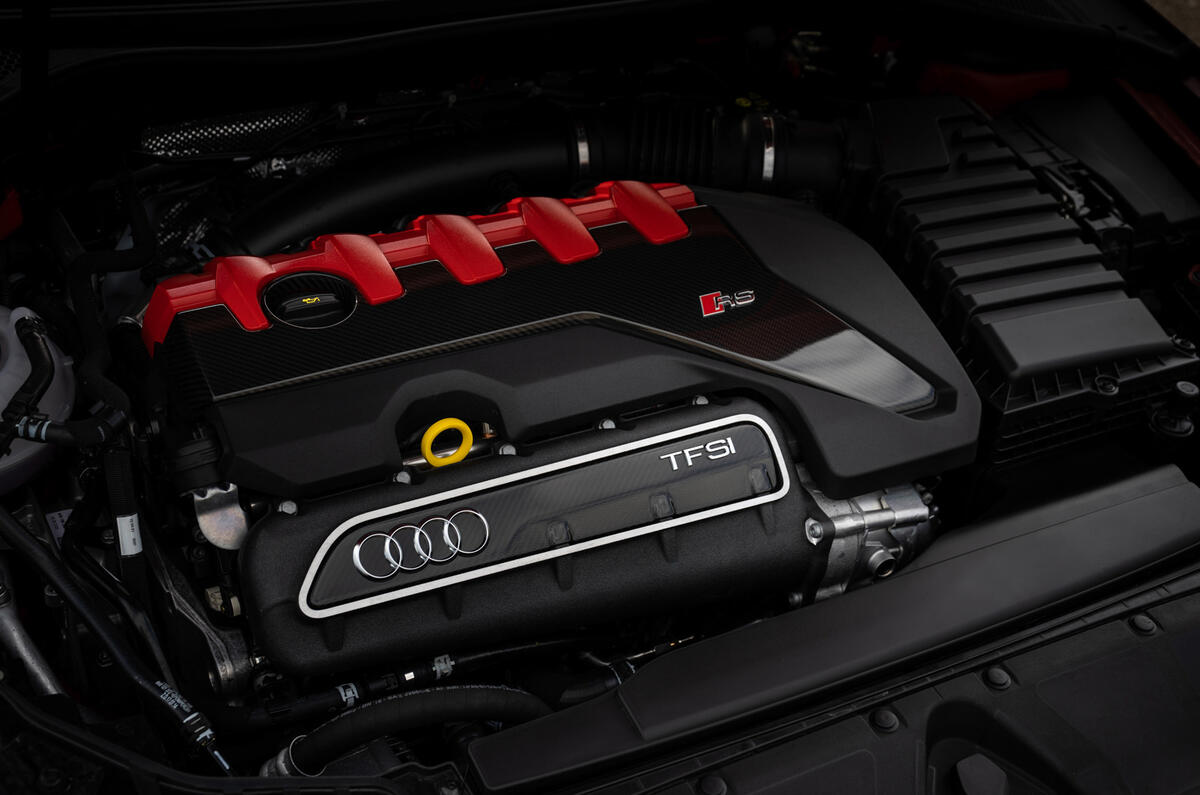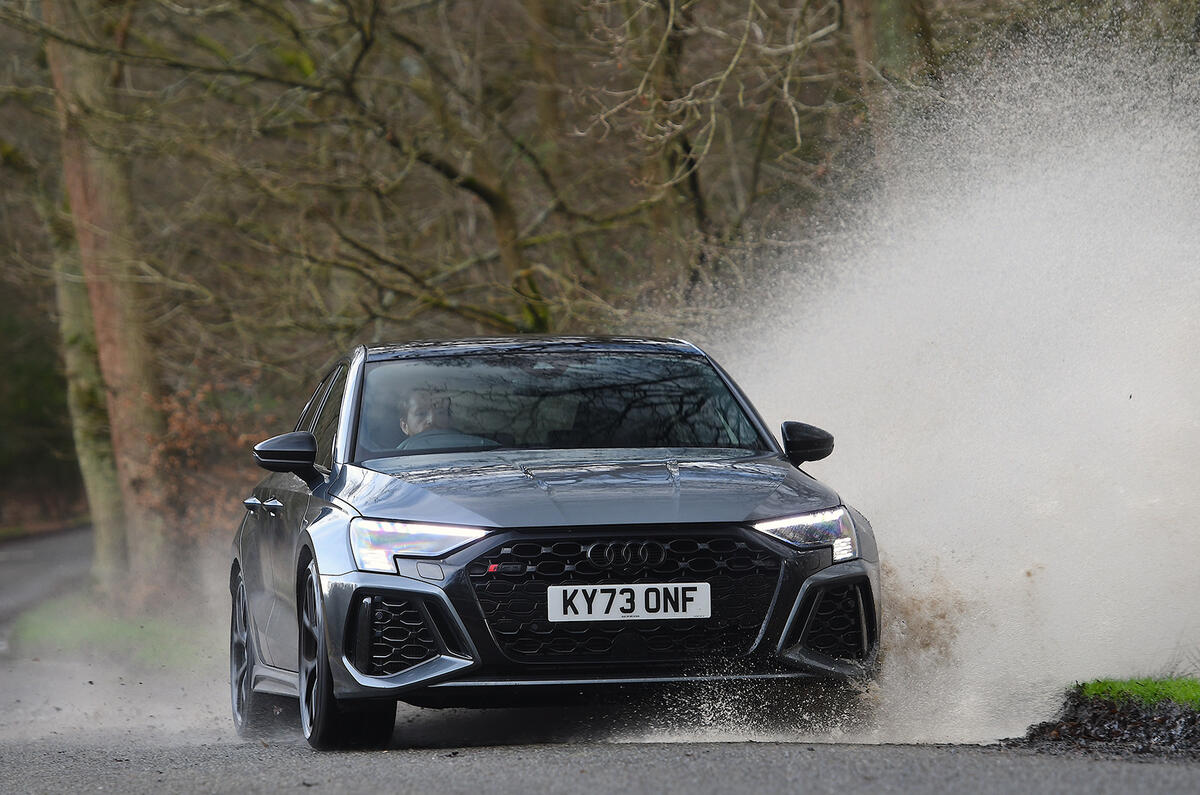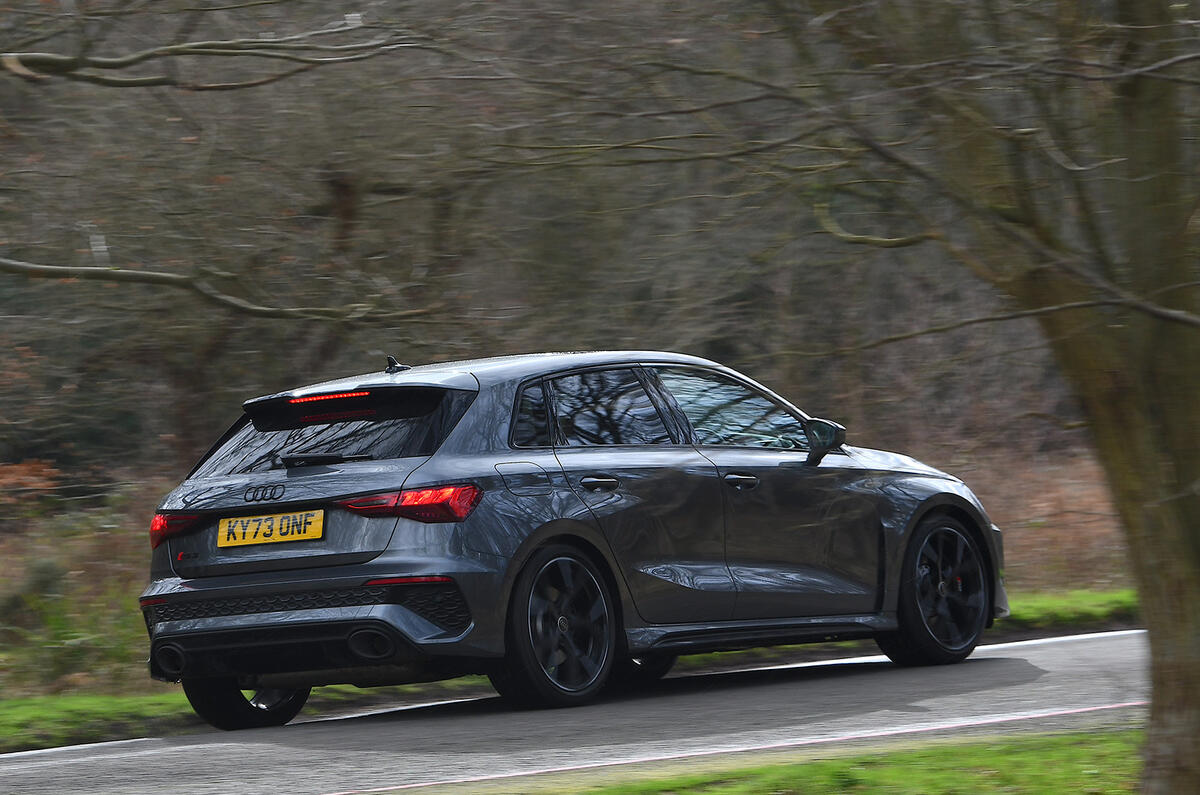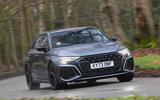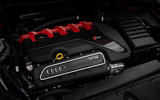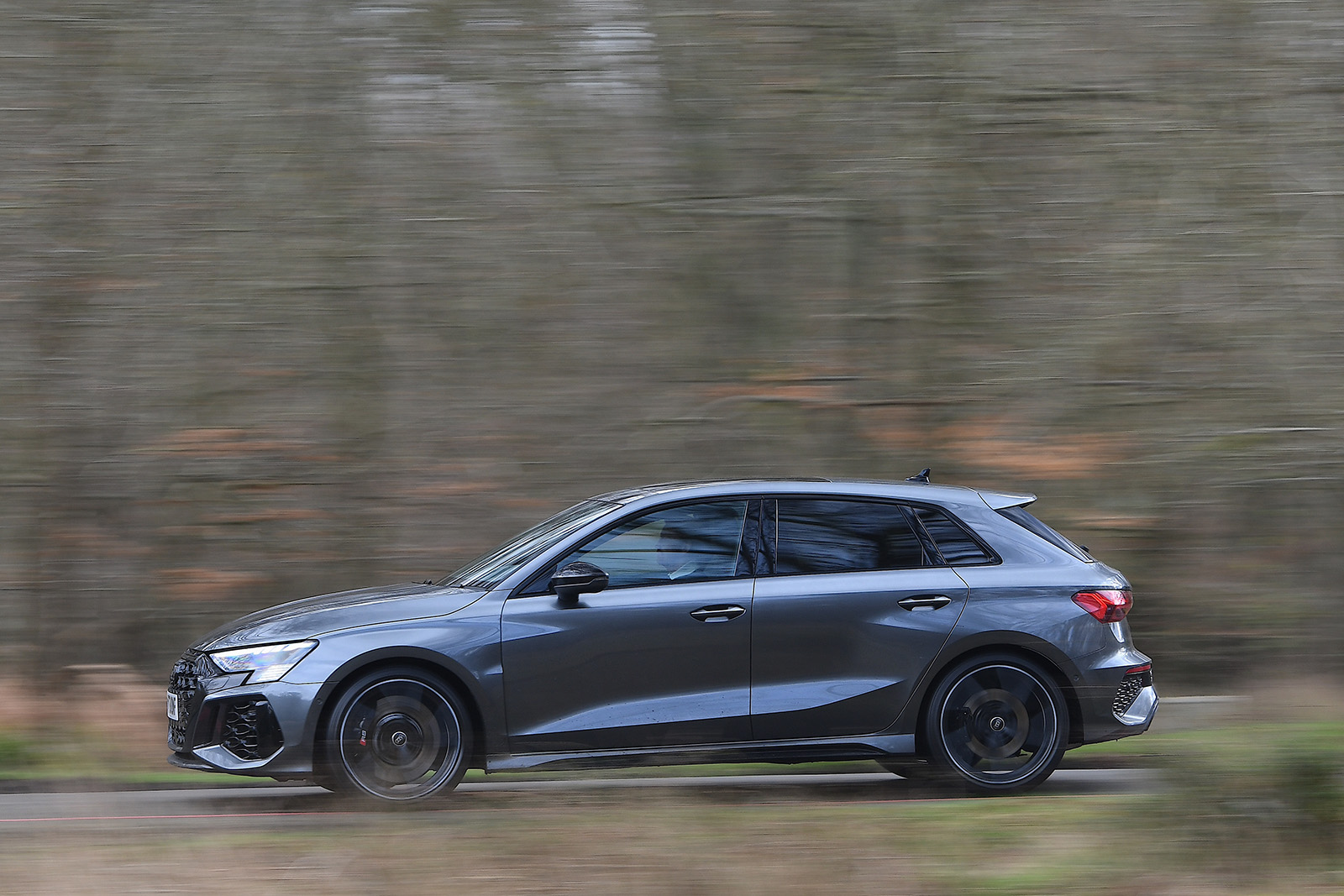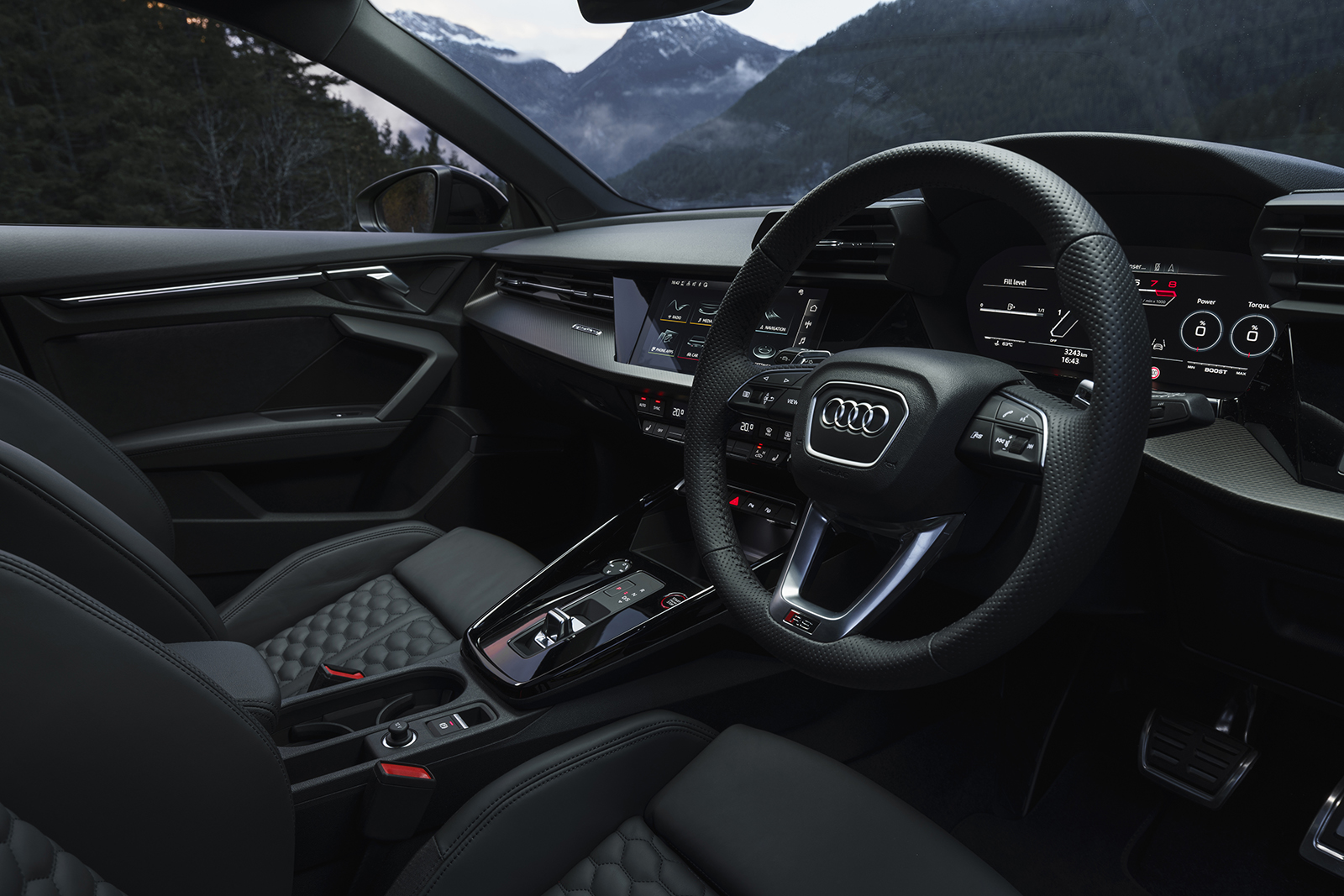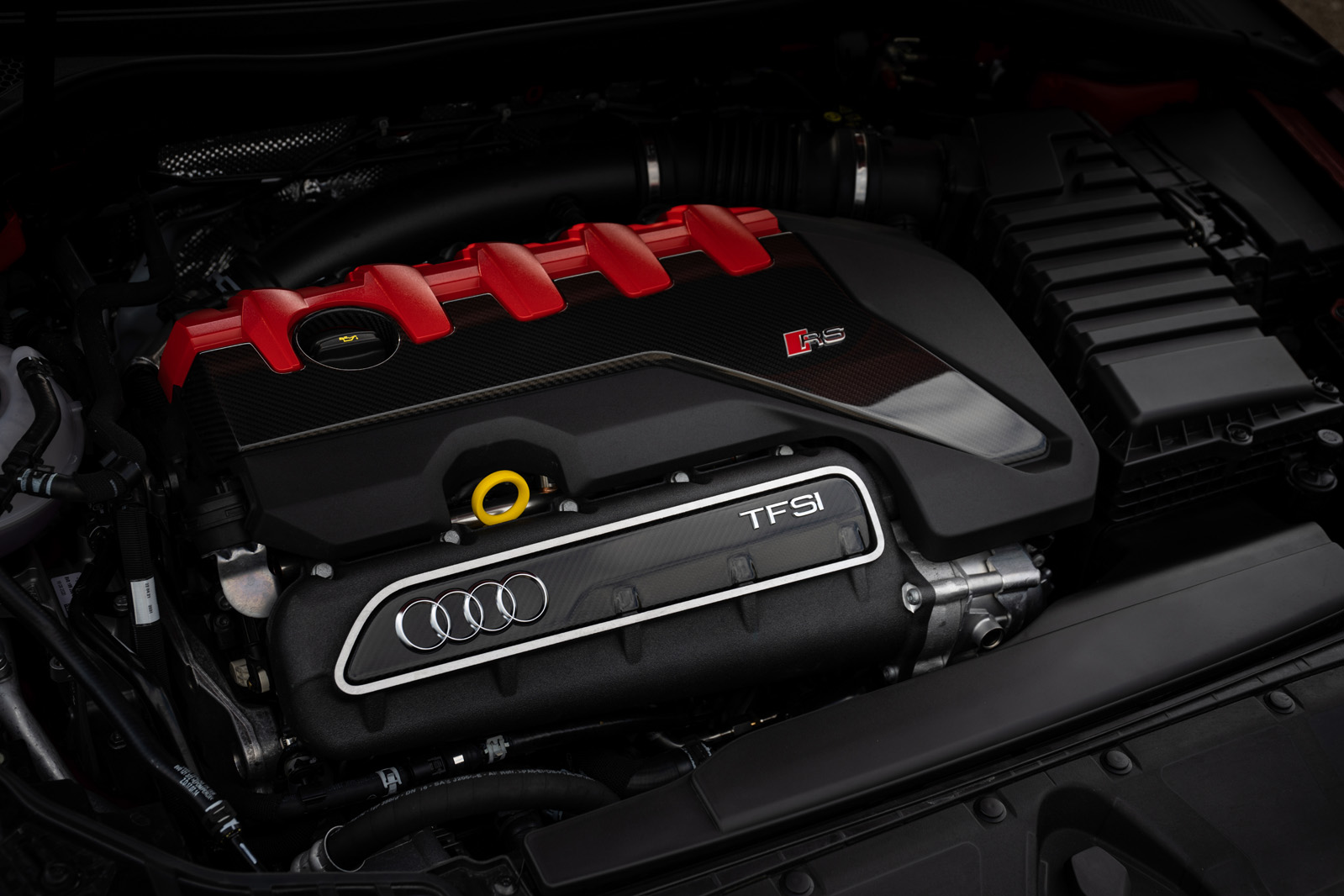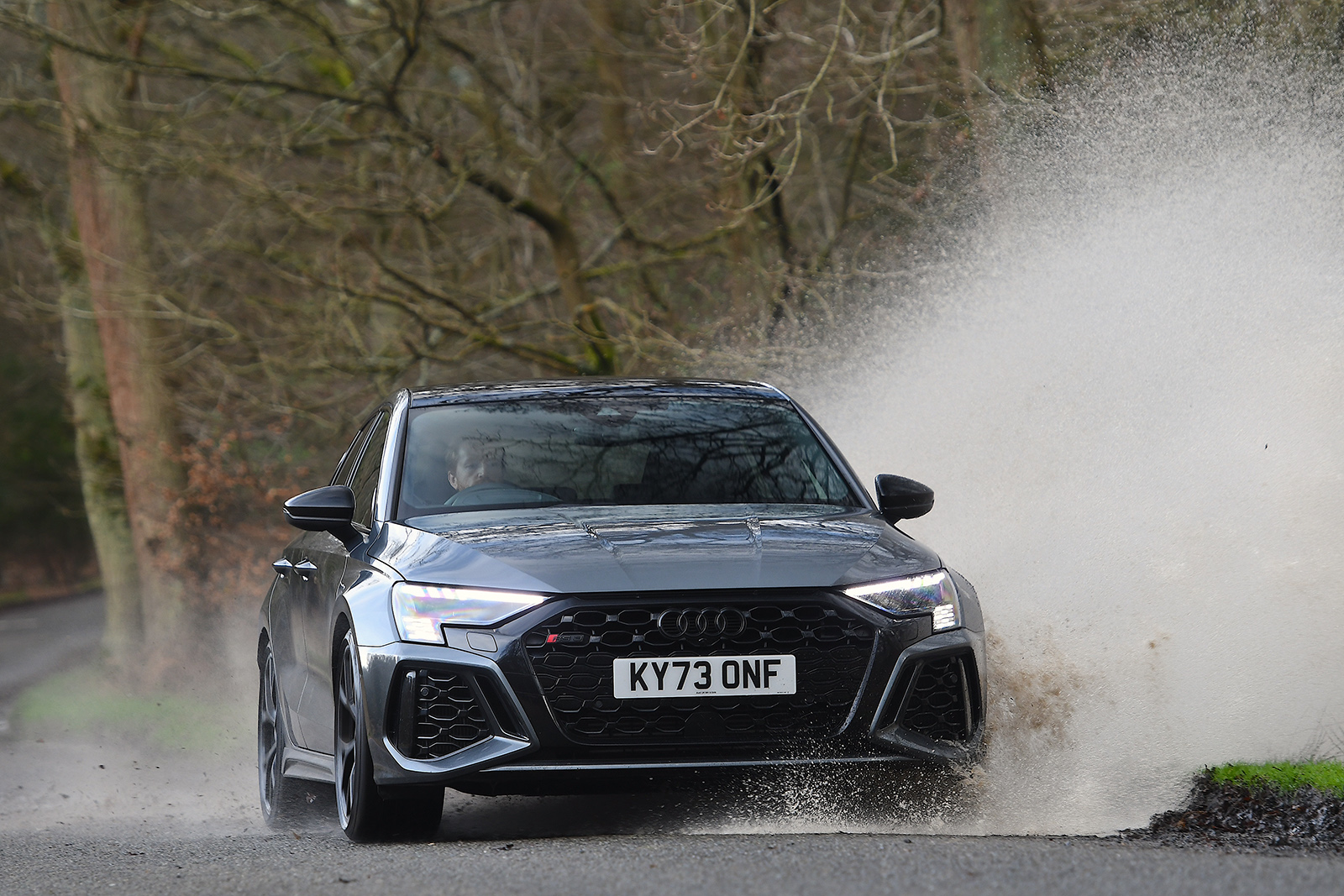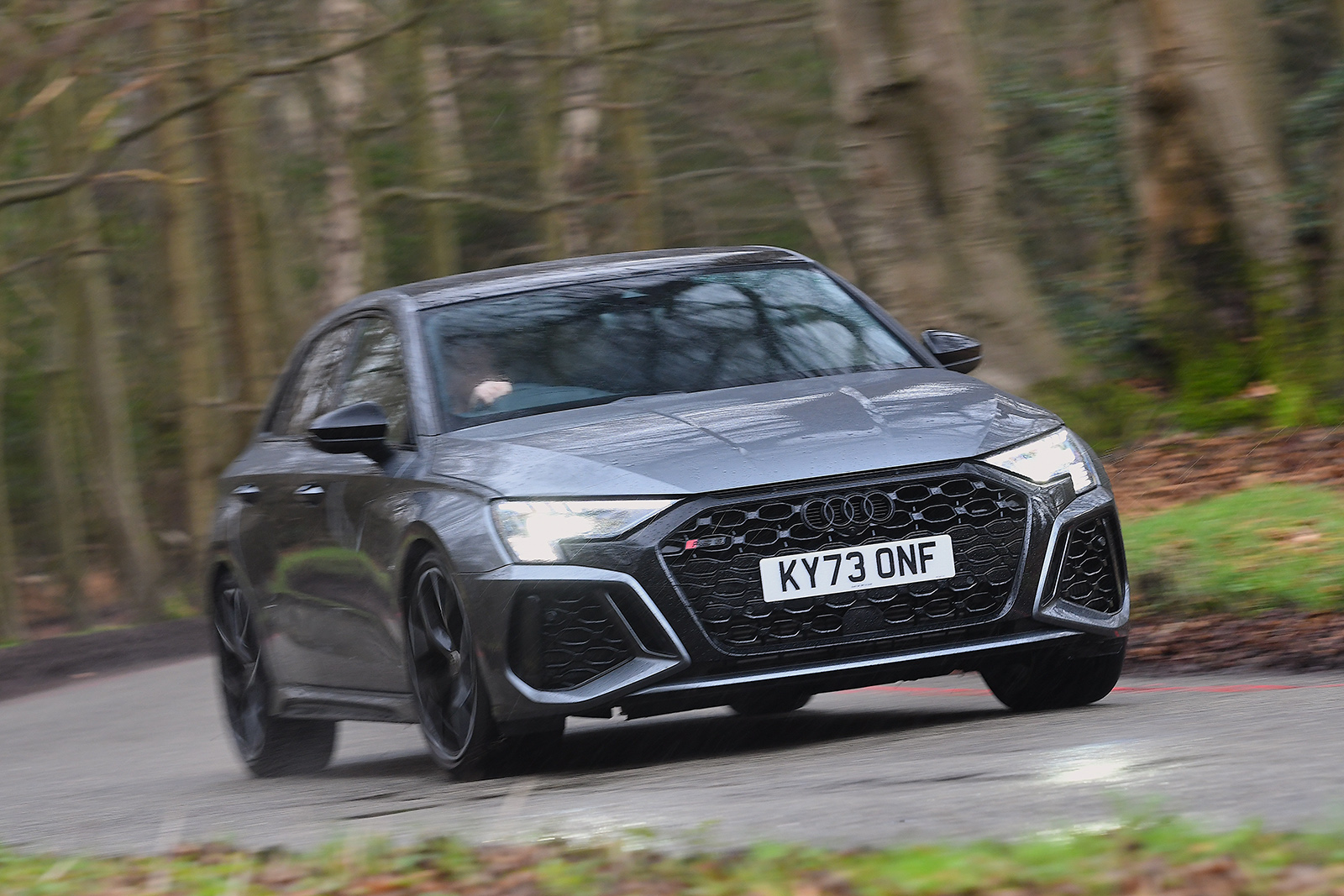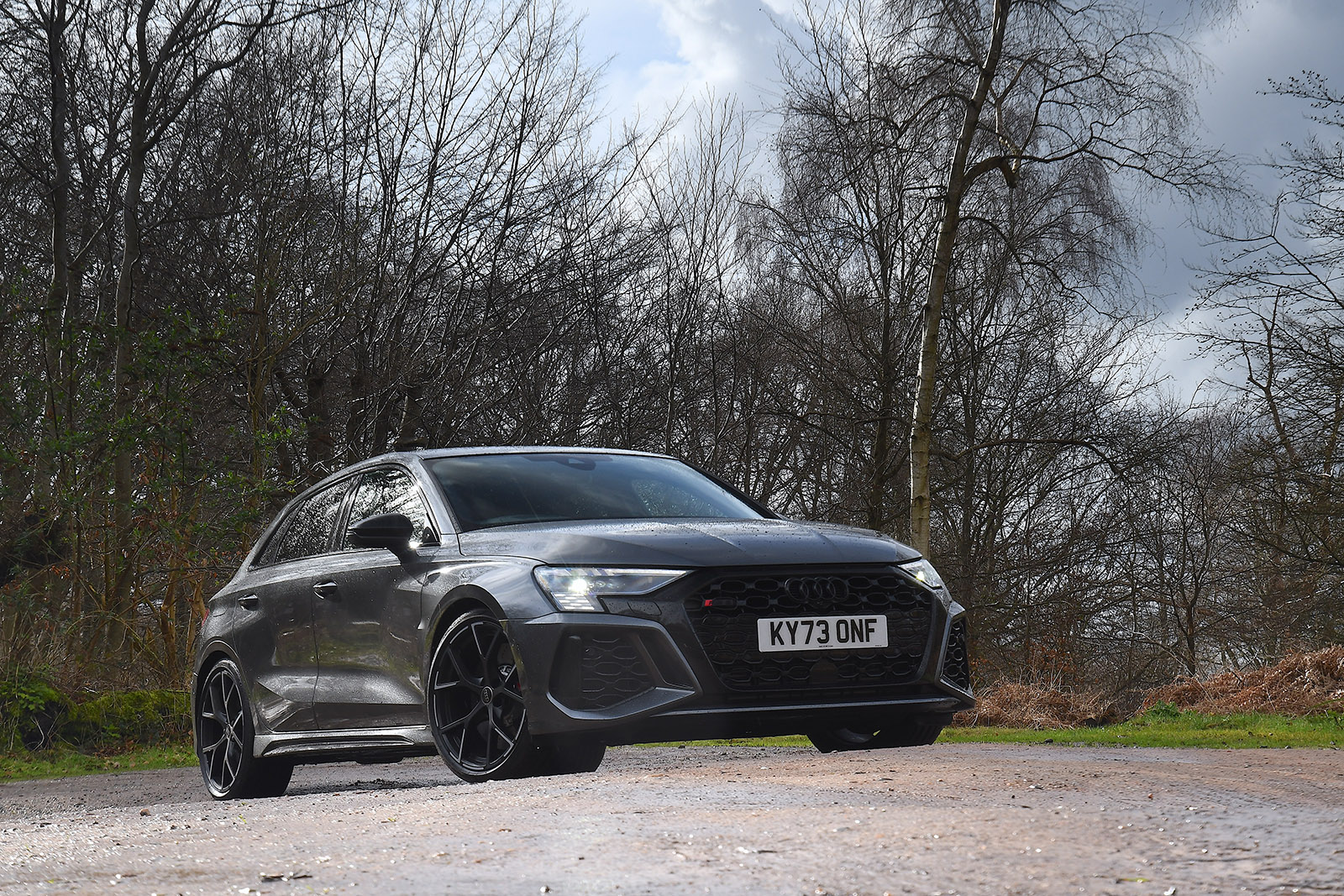There’s an admirable belligerence about the Audi RS3. It hasn’t been made a crime just yet, after all, to put a big engine into something relatively small and create an amusingly alternative driver’s car in the process, much as a great many of Europe’s CO2-based taxation regimes would already suggest it ought to be.
It really would be an aberration, though, if Audi’s excellent EA855 five-cylinder performance engine, motivator of the likes of the Audi TT RS and RS Q3 and winner of more International Engine of the Year awards (yes, they do exist) than you can shake a golden crankshaft at, were taken from us any earlier than was absolutely necessary.
Hot hatchbacks like this used to be a little more common, but the RS3 has become the last of that over-engined breed, with motors significantly bigger, more powerful and more mechanically exotic than you expect to find in any humble five-door and something of the aura of the custom-built, engine-swapped hot rod about them.
The Mercedes-AMG A45 is just as outrageous, but is powered by merely four cylinders. The Volkswagen Golf R is a more subtle alternative, while the Toyota GR Yaris is smaller and perhaps a bit more fun.
But the Audi is somehow mechanically bigger and bolder than its rivals. And yet more restrained - and even a bit dour - compared with them.





